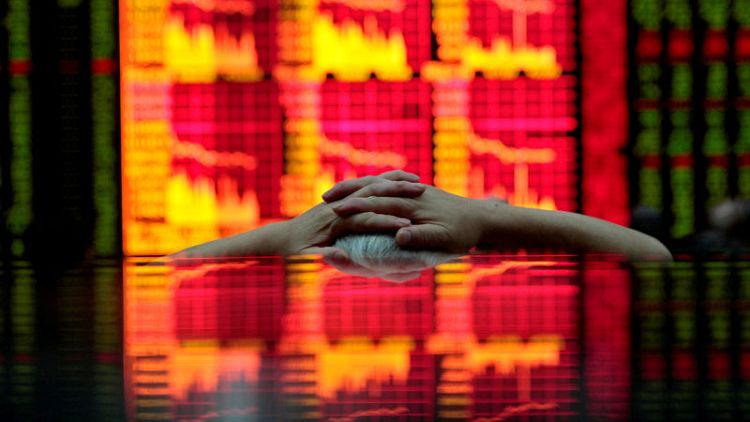By Patturaja Murugaboopathy and Gaurav Dogra
(Reuters) - Foreign investors sold Asian equities for a fifth consecutive month in June, as escalating United States-China trade tension created doubts on whether the synchronized global growth that benefited regional stocks last year could be sustained.
Overseas investors were net sellers of $7 billion of Asian stocks last month, taking this year's total to $22.3 billion, data from seven stock exchanges showed.
According to the data, the January-June outflows were the biggest since at least the first half of 2013, when emerging markets were hit by the "taper tantrum" as the U.S. Federal Reserve started reducing its stimulus.
Taiwan equity markets witnessed $2.7 billion of net outflows, while Thailand and South Korean markets each saw more than $1 billion.
(Graphic - Foreign investments in Asian equities: https://reut.rs/2KJHbgS)
Foreigners also heavily sold Indian and Indonesian equities last month. The two countries have the region's biggest current account deficits, making them vulnerable if they have to attract foreign money to foot bigger oil bills.
In the first half, the MSCI Asia-ex-Japan <.MIAPJ0000PUS> index shed more than 5 percent, the biggest fall for a January-June period since 2013.
The index touched a nine-month low of 527.5 on Tuesday.
"Markets seem to be pricing in the risk of further escalation in US/China trade friction and an uncertain global macro backdrop (slowing and less-synchronized global growth, U.S. monetary policy tightening and a firmer dollar)," analysts said in a Goldman Sachs report on July 1.
On Friday, the United States is due to slap tariffs on $34 billion of Chinese imports. Beijing has vowed to match U.S. action with tariffs on the same amount of U.S. imports.
Washington has also threatened Europe with a 20 percent tariff on car imports while various countries have also already taken retaliatory steps against U.S. tariffs on steel and aluminium products.
"It is apparent that tariffs on Chinese exports are much more consequential for EM than those on U.S. exports, and that the pain is likely to be concentrated in Asian EM," said Craig Botham, emerging markets economist for Schroders in a report on Tuesday.
Asian markets are also feeling pressure from China's slowing economy as the region plays a major part of the supply chain to China's exports.
Despite the sharp increase in foreign outflows this year, some analysts believe regional equities will perform well in the second half.
"The foreign outflows from Asian markets have been worse than the taper tantrum days even as the fundamentals are on a better footing today," said Rajat Agarwal, a strategist at Societe Generale.
"We think the second half should be better in terms of flows," he said, adding that Asia should get some tailwinds as high U.S. yields and the dollar recede somewhat.
(Graphic - Asia's current account balance and foreign reserves: https://reut.rs/2IQD8xa)
(Reporting by Patturaja Murugaboopathy and Gaurav Dogra)



